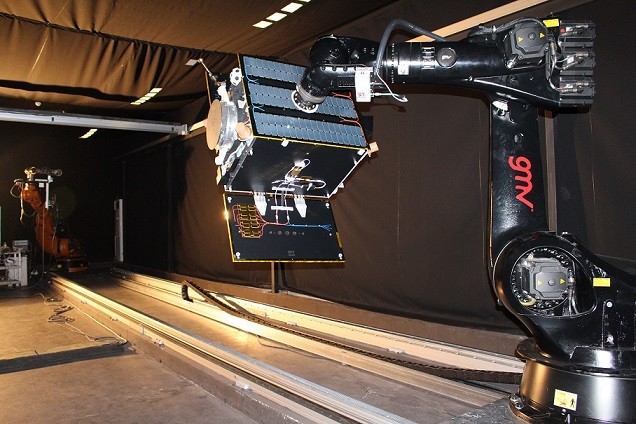GNC systems and asteroids

When thinking about asteroids today, it is unavoidable to mention Planetary Defense. Earlier posts on the blog discussed the need for Planetary Defense and how the HERA Mission will be a part of this effort.
EUROPE’S FIRST MISSION TO A DOUBLE-ASTEROID SYSTEM
The HERA mission prime objective is to develop planetary defense technology. It will contribute to the understanding of how an asteroid on a collision course with Earth may be deviated in the future. Launched in 2024, the HERA mission will reach the binary asteroid system Didymos in late 2026. The binary asteroid system comprises a main, mountain-sized, 780-meter diameter asteroid orbited by a smaller 160-meter asteroid, called Dimorphos. The trajectory of Dimorphos will be altered by a kinectic impactor and HERA will study its effect to make a precise assessment of how much the trajectory has changed. The HERA mission will be controlled from the European Space Operations Centre (ESOC), based in Darmstadt, Germany.
THE CHALLENGES OF A MISSION TO AN ASTEROID
A mission to an asteroid such as HERA poses demanding challenges, such as:
- Weak and complex environments;
- Large contribution of the Solar Radiation Pressure whose effect on the SC is challenging to model;
- Large contribution of non-gravitational;
- Large uncertainties on the dynamical environment due to the bodies’ irregular shapes and uncertain prior data;
- Optical measurement errors due to the irregular shape of the body.
To face these challenges, novel navigation strategies in small body missions rely on a combination of agile operations and on-board autonomy. To take full advantage of on-board systems, both operations and the GNC systems have to be developed in a tight collaboration between multidisciplinary teams. The cooperation between the operations and the GNC system team grants a full understanding of the constraints, requirements and allows the exploitation of novel systems to their full potential, maximize the mission scientific and technological returns.
GNC SYSTEM ESSENTIAL FOR THE HERA MISSION SUCCESS
HERA will be fitted with a GMV-developed Guidance, Navigation and Control (GNC) system. GMV is a European GNC leader and ranks among the world’s pioneers in planetary and asteroid exploration missions. The company’s portfolio of European projects, featuring AIM, Marco POLO, Neoshield2, SYSNOVA-BEAST, and Rosetta has won GMV leadership in this field.
The GNC is responsible for maintaining and controlling the spacecraft’s attitude and orbit according to the mission profile. It ensures the desired guidance, navigation and control performance, providing additional safety to guarantee mission success.
HERA, demonstrating groundbreaking autonomous asteroid-orbiting technology in an analogous way to driverless cars on Earth, will gather crucial information to help scientists and future mission planners gain a much better understanding of the composition and structure of asteroids.
A relevant part of developing GNC System technologies is testing. The tests to certify the technological readiness of GMV’s autonomous GNC system were carried out using a camera designed to work in space and a scale model of the Didymos binary asteroid system. To ensure these tests were as realistic as possible, the deep space darkness conditions in which HERA will be working were reproduced on ground. The April 2020 ground validation tests of the GNC system were first conducted in GMV’s optical laboratory and afterwards in GMV’s robotic laboratory platform-art@ in Madrid, one of Europe’s most advanced robotic testbeds for validating GNC systems.
LEVERAGING GMV’S GNC EXPERTISE FOR JUVENTAS
Juventas takes part in the Hera mission as one of the two CubeSats that will be released in the asteroid proximities. To safely navigate in a harsh and unpredictable environment at close distances, Juventas will perform autonomous operations using its GMV-developed GNC system. The high latency of the information causes great uncertainties. Hence, to prevent the asteroid from abandoning the camera’s field of view, on-board attitude corrections must be commanded by the GNC system to achieve continuous imaging of the asteroid.
Also, as an extended part of the mission, Juventas will attempt to land on the surface of Dimorphos. The landing process comprises a controlled touchdown using the autonomous GNC system and a series of uncontrolled bounces until Juventas rests on the asteroid surface. The highly perturbed dynamics together with the small size of the target makes the landing the most challenging operation that Juventas will face. This imposes challenging constraints on the mission design, highlighting the impact and necessity of an autonomous GNC system.NC autónomo.
